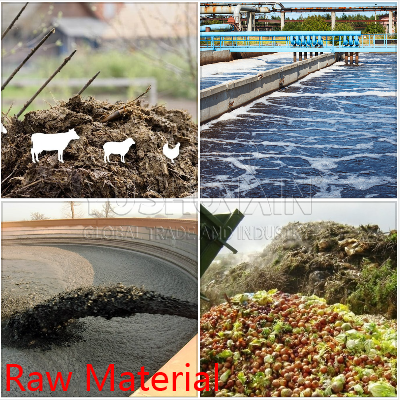What are the Key Equipment for Efficient Anaerobic Fermentation?
To achieve a high-quality liquid fertilizer anaerobic fermentation process, it is an excellent choice for you to use the following machines.
Kumuha ng solusyonLiquid fertilizer anaerobic fermentation process is an efficient method to convert organic waste into nutrient-rich liquid organic fertilizer. Using raw materials such as animal manure, poultry litter, Mga nalalabi sa Crop, and biogas slurry, you can produce liquid fertilizer with stable nitrogen, Phosphorus, and potassium content. YUSHUNXIN provides professional anaerobic fermentation systems, including solid-liquid separation equipment, UV sterilizers, and anaerobic fermentation tanks. These systems help you achieve fast fermentation cycles, ensure consistent nutrient levels, and reduce production risks.
To achieve a high-quality liquid fertilizer anaerobic fermentation process, it is an excellent choice for you to use the following machines.
Kumuha ng solusyon
Anaerobic fermentation transforms organic matter into nutrient-rich liquid fertilizer through the metabolic activity of anaerobic microorganisms. In an oxygen-free environment, these microbes decompose proteins, carbohydrates, and lignin into soluble nitrogen, Phosphorus, at potasa. The fermentation process typically completes in 3–5 days under mesophilic conditions (35–40°C), when microbial enzymatic activity is optimal. During fermentation, producers can introduce supplemental NPK powders, trace elements, or microbial inoculants to enhance nutrient content and biological activity. The recommended addition is 1–5% of total feedstock, ensuring uniform distribution without inhibiting microbial metabolism. Maintaining stable pH and nutrient balance allows microbes to efficiently convert complex compounds, stabilize the liquid fertilizer, and reduce odor.
Kumuha ng solusyonBy following these below steps, you can maximize efficiency, ensure stable NPK content, and produce top-quality liquid fertilizer.
Problem: Sudden drops or spikes slow microbial activity, reducing nutrient conversion.
Solution: Maintain stable 35–55℃ using controlled heating; monitor daily to ensure consistent fermentation and NPK levels.
Problem: Air entering the tank causes aerobic microbes to dominate, slowing anaerobic digestion.
Solution: Keep tanks sealed and check gaskets; use Yushunxin’s anti-foaming and oxygen-proof designs to ensure true anaerobic conditions.
Problem: Over- or under-dosing microbial agents or trace elements can inhibit fermentation or produce unstable fertilizer.
Solution: Add 1–5% inoculants and nutrients precisely; follow preset ratios to maintain uniform, high-quality liquid fertilizer.

Whether you plan a small-scale or commercial liquid fertilizer plant, YUSHUNXIN can provide customized anaerobic fermentation solutions to ensure stable nutrient content, high efficiency, and long-term reliability. Contact us today to discuss your project.
Makatanggap ng mga libreng kagamitan sa kagamitan sa libangan at mga detalye ng produkto, at tamasahin ang isa-sa-isang pasadyang mga serbisyo.
Iwanan ang iyong mensahe
 Quote
Makipag -ugnay
Quote
Makipag -ugnay
Hindi mo maaaring kopyahin ang nilalaman ng pahinang ito